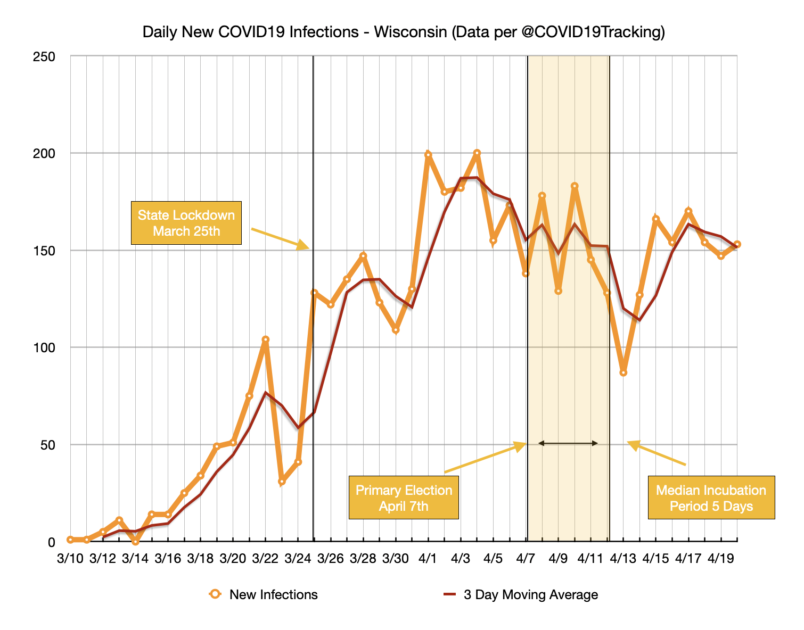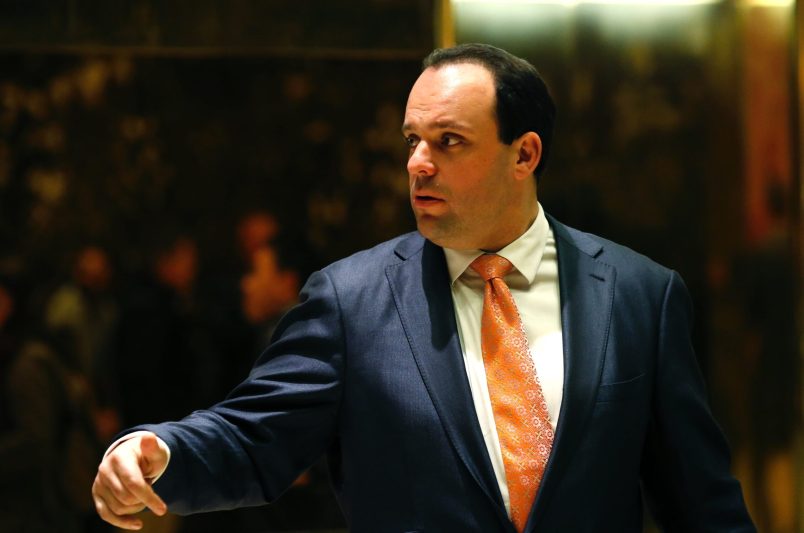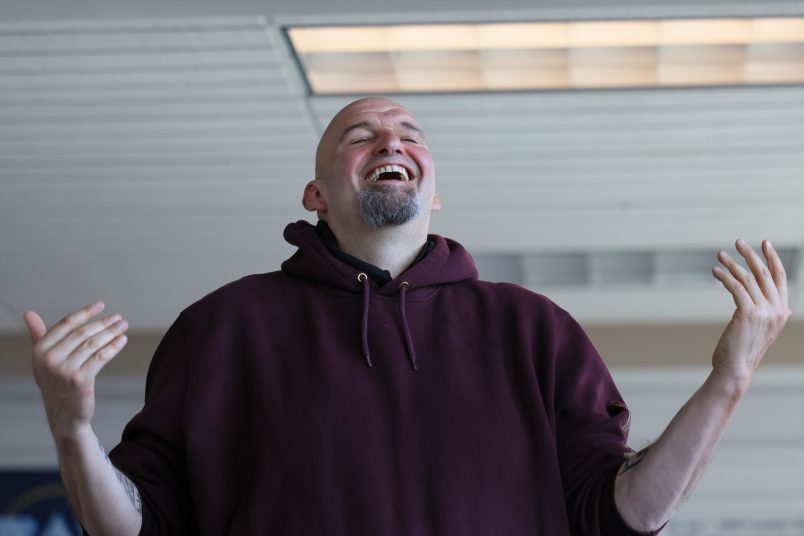You remember the controversy. To me it was one of the most unconscionable acts of the whole COVID19 Crisis in the US, which is saying a lot. The Wisconsin GOP forced an in-person in election in the midst of a deadly epidemic because they believed that a low turnout election would help them retain a seat on the state Supreme Court. As it happened, they lost the seat. But did forcing Wisconsinites out of their houses and to voting stations spur new infections in any documentable way?
Let me start by saying the evidence looks ambiguous to me at least. But it’s gotten some discussion online. So I put together a chart to see what happened.

Here are I’ve graphed the numbers from The Covid Tracking Project. I’ve plotted each day’s new infections in the orange line. The red line is a moving three day average. Then I’ve anchored a few key dates. March 25th is the beginning of the lockdown in the state. April 7th is the date of the primary. Then I’ve marked five days forward, April 12th. Numerous studies have placed the median incubation period of COVID19 at approximately five days. So if there’s an uptick we’d expect to see it at five days or actually a bit after, given that we’re looking at confirmed tests rather than the actual onset of symptoms.
So did the primary lead to an uptick of infections? Well, as you can see, there is a jump starting on the 7th day after the election, April 14th. It zips up and then stabilizes again with a slow downward trend. If you look at the chart a certain way you can see the numbers peaking ten days after the lockdown, then arching down the first half of the month before jumping back up on the 14th and 15th. From there we see what looks like the beginning of a new downward trend.
So is this the proof? I think the answer is pretty clearly no. The data is fairly noisy and limited. And as we’ve discussed in other contexts testing is so limited that the number of new infections confirmed each day can simply be an echo of the oddities of testing. The numbers are also fairly small. Wisconsin is a low incidence state and relatively low on testing. The highest day is 200 infections, a number that is dwarfed by the numbers in the hardest hit states. Indeed, a lot of the appearance of a trend is anchored on the very low number on April 13th.
We just don’t have clear enough data to say. But there’s maybe some indications of some uptick about a week after the primary, which is more or less when you’d expect to see it.







